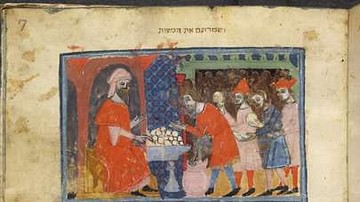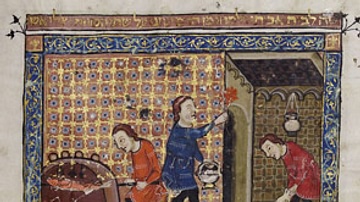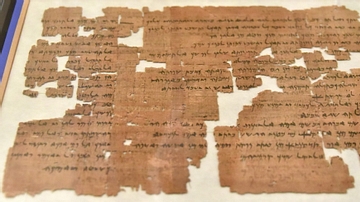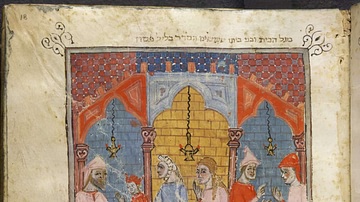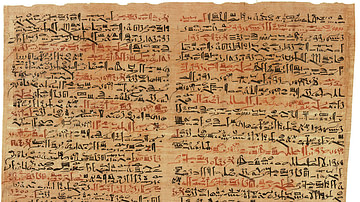Illustration
A papyrus letter, written in Aramaic, from the fortified island of Elephantine in Egypt. The letter was written c. 419 BCE by a Jewish man named Hananiah and is addressed to his brother Jedoniah and the rest of the Jews garrisoned at Elephantine. The letter states that King Darius II (r. 424 - 404 BCE) has instructed the Persian satrap Armases (c. 5th Century BCE) to allow the Jewish garrison at Elephantine to observe a seven-day festival of unleavened bread. This is believed to be an early reference to observance of the Passover holiday.
The so-called Passover Papyrus was found during the excavations of Otto Rubensohn and Friedrich Zucker in the early 20th Century. This papyrus is now part of the collection of the Egyptian Museum of Berlin in Germany.
References
World History Encyclopedia is an Amazon Associate and earns a commission on qualifying book purchases.Cite This Work
APA Style
Berlin, E. M. o. (2019, April 17). The Passover Papyrus from Elephantine. World History Encyclopedia. Retrieved from https://www.worldhistory.org/image/10468/the-passover-papyrus-from-elephantine/
Chicago Style
Berlin, Egyptian Museum of. "The Passover Papyrus from Elephantine." World History Encyclopedia. Last modified April 17, 2019. https://www.worldhistory.org/image/10468/the-passover-papyrus-from-elephantine/.
MLA Style
Berlin, Egyptian Museum of. "The Passover Papyrus from Elephantine." World History Encyclopedia. World History Encyclopedia, 17 Apr 2019. Web. 19 Apr 2024.

